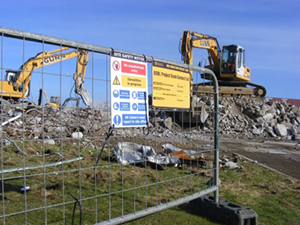Sep 8 2009
UK Government Minister Lord Hunt today visited the site of Scotland’s most successful nuclear clean-up project and watched the first screening of a film about its clean-out and demolition.

Lord Hunt, the minister with responsibility for the Nuclear Decommissioning Authority at the Department of Energy and Climate Change, was on a fact-finding visit to Dounreay.
His visit coincides with the release today of Decommissioning Dounreay – the demolition of the plutonium criticality laboratory.
The five-minute film tells the story of an eight-year, £5 million project to clean-out and dismantle one of the most contaminated legacies of 1950s nuclear research and development in the UK.
One of four such laboratories built at Dounreay, it was used until 1963 to replicate experiments carried out in the United States on the behaviour of plutonium solutions. For the next 30 years, it was boarded up and used as a store for radioactive debris until a decommissioning squad first entered the redundant building in 1999 to begin the clean-out.
They made 25,000 separate entries to the building wearing respirators and airline suits and it took them until 2008 to remove all the contamination.
Known as D8550, or the PUMA cell, it was part of a series of laboratories where the first nuclear reactions occurred on Scottish soil.
“There were suggestions in the past that buildings like D8550 could never be decontaminated safely,” said senior project manager Charlie Fowler, who appears in the film. “This decommissioning project team has shown that even the most radiologically contaminated areas can now be decommissioned safely and efficiently.”
The video can be viewed at the Dounreay website and You Tube.
Dounreay is the second biggest nuclear decommissioning project in the UK and today’s visit also saw Lord Hunt look inside the decommissioning of the site’s experimental fast breeder reactor. Housed inside the iconic sphere, its hazardous legacy of contaminated liquid metal and breeder material makes the ongoing clean-up one of the UK Government’s strategic priorities for action.